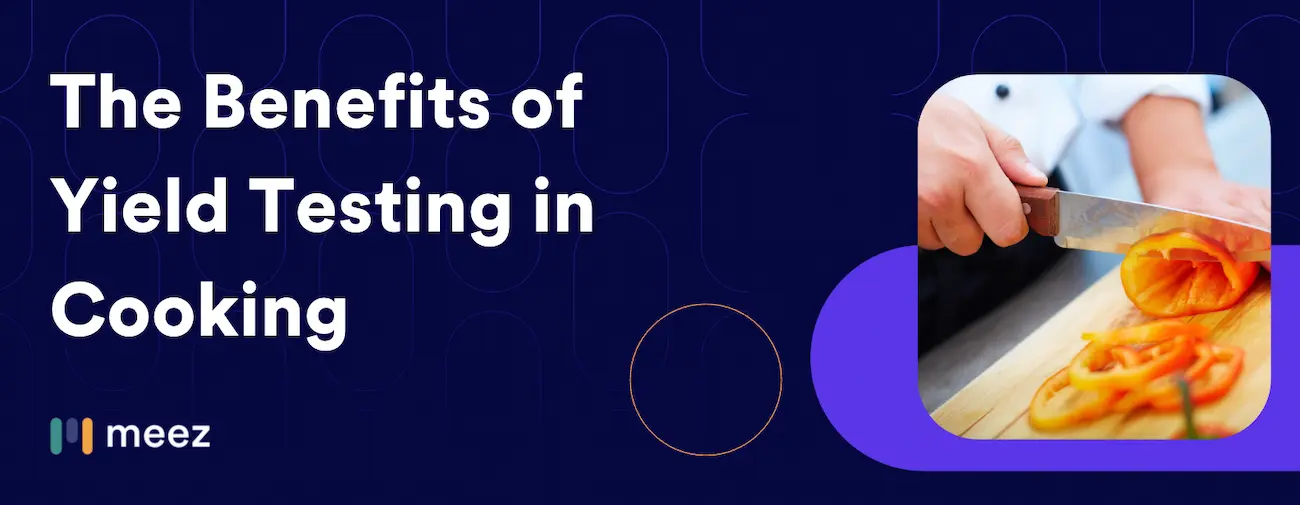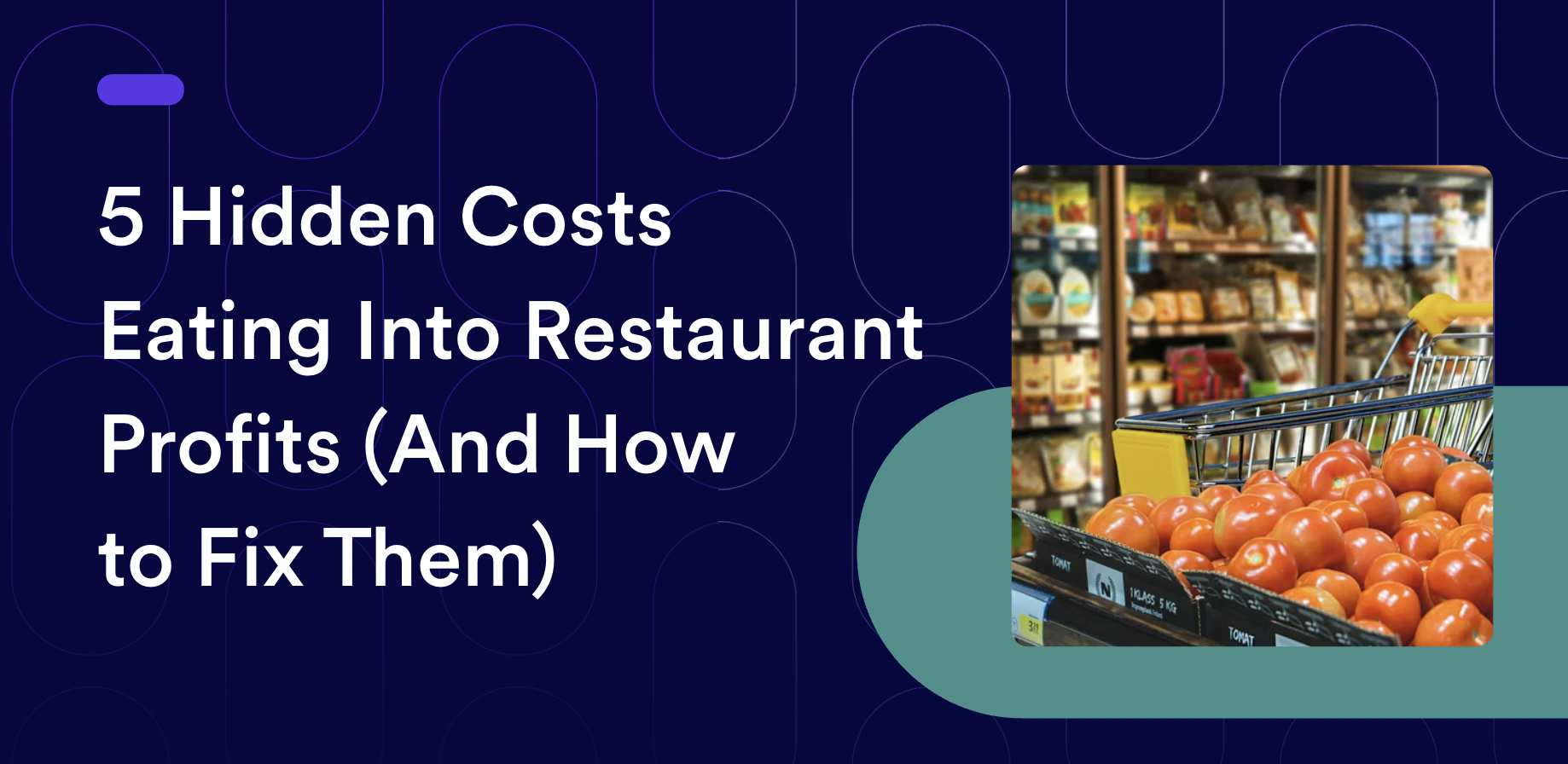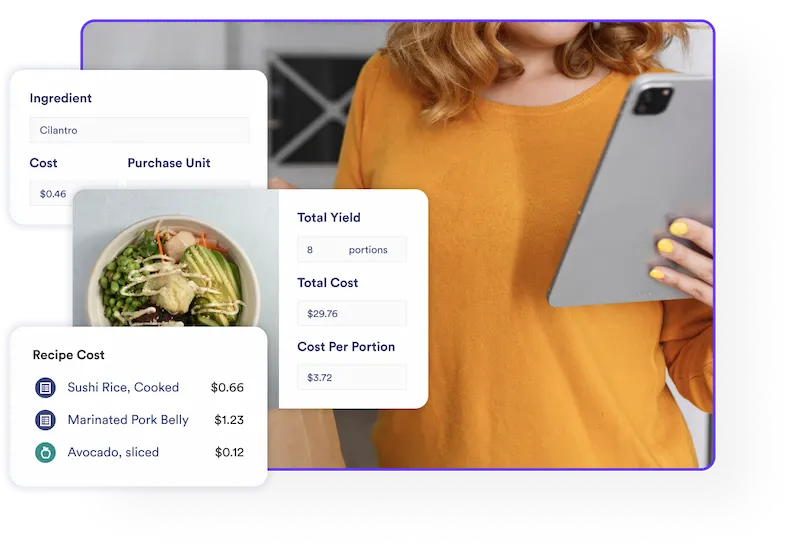Yield testing in cooking is all about figuring out how much you end up with after preparing a recipe. Imagine you're making a French onion soup. The recipe asks for 2 lbs of onions, but after peeling and trimming, you might only have 1.7 lbs left to use. That's the yield - the usable amount after processing.
Yield testing is crucial for food cost calculation. Every bit of vegetable peel, meat trim, or leftover brine has a dollar value, and you've already paid for it. So, when setting the menu price, you must include these costs.
Why should you consider ingredient yields?
So, why bother with ingredient yields? Well, here are some good reasons:
- Exact Costs: You know exactly what you're paying for, making your menu pricing more accurate.
- Quality Check: Periodic yield tests ensure your wholesaler delivers what they promised. If trim and waste increase, so do your food costs.
- Supplier Evaluation: By comparing results from different wholesalers, you can decide who's giving you the better deal.
- Efficiency Check: Comparing yields between people doing the cting tells you who is the most efficient.
- Consistency: Since individual pieces may vary slightly, testing multiple samples gives you a better idea of your standard yield.
While pre-portioned ingredients are gaining popularity, especially meats, these tests still offer valuable insights into your costs and help you navigate the ever-changing world of prices.
How do you do a yield test?
How do you do a yield test? It's pretty straightforward. You start with your ingredient's original weight (say a 5.5 lb tenderloin). After processing and measuring the waste or trim weight (like fat and sinew), you subtract that from the original weight to get your processed or edible product weight.
Next, you find the yield percentage by converting the edible product weight into a percentage of the original weight. This percentage is crucial because it tells you how much of a usable product you have, helping you decide how much raw product to order and the actual cost per dollar spent.
You then translate the yield percentage into money to get a clear picture of the costs. This involves determining the actual cost for your processed ingredient, factoring in the losses from trimmings and waste. This gives you the processed cost or EP cost.
For example, if your original cost for a tenderloin was $22.00/lb and the yield percentage was 70%, your new cost per kilogram of usable meat (EP cost) would be $31.66/lb.
This process is essential for meat and seafood, which are often pricier and have significant waste. Meat, for instance, might be trimmed before portioning, affecting the portion cost. That's where meat-cutting yield tests come in. They help determine the exact costs, ensuring accurate menu pricing.
Even though pre-portioned meats are becoming popular, yield tests still have benefits, like checking if the supplier meets specifications, comparing efficiency between cooks, and getting an average yield for consistent results.
How to Use Yield to Calculate Food Costs
Understanding yield percentage is like knowing the superhero stats for your ingredients. It tells you how much usable stuff you get after preparing, how many raw ingredients to buy, and the actual cost per dollar spent.
Now, let's talk about using this info to figure out the money side of things, especially in the kitchen.
You can turn your yield percentage into money talk once you know your yield percentage. Think about it like this - when you trim and deal with waste, the actual cost of what you use goes up from what you initially paid for the raw stuff (we call this the AP cost).
Start by noting down what you paid for the item (AP cost):
- Whole beef tenderloin – $21.00/lb
- Whole chicken – $1.65/lb
Now, here comes the factor! It's like a magic number that helps turn percentages into actual costs. The formula is simple: 100 ÷ yield % = factor. So, for a beef tenderloin with a 70% yield, the factor is 1.42.
Now, the easy part. To find your Edible Product (EP) cost, you multiply the factor by the cost of the raw item. For example:
- Beef Tenderloin: $21.00 × 1.42 = $29.82lb
- Whole Chicken: $1.65 × 1.54 = $2.54/lb
Why all this math? Because there can be a big difference between the cost of the raw stuff and what you use. By going through these steps, you figure out the EP cost. Once you know that, setting the menu price becomes a breeze.
How to Calculate Yield Percentages - Meat
When you get meat delivered, and it's not pre-cut, you've got some work to do. You need to trim and cut it into portions. But here's the catch – the bits you lose during this process matter when figuring out how much each portion costs.
Imagine you get an 8.8 lb bone-in pork butt roast for $2.38/lb, making the total cost $20.94. Now, you trim off some fat and sinew, weighing 6.7lb at a 76% yield. The usable meat (let's call it EP cost) has gone up from $2.38 a pound to $3.13 a pound.
It's like a bit of math magic!
Remember portion size and portion cost!
In this case, let's look at the shredded pork you made from a pork butt roast. Each serving is 0.44 pounds. To find the cost for one serving, multiply the cost of one pound of pork by the portion size. For instance, if your 8.8-pound pork butt roast gives you 15 servings (each weighing 0.44 pounds), and your cost for one pound of pork is $3.13, then the cost per serving would be $1.37.
How to Calculate Yield Percentages - Produce
Now, let's talk about a vegetable yield test. It's like a detective job done by the person handling the veggies, keeping track of the weights of the different parts.
Let's say a 3.1lb butternut squash costs $1.64/lb. After it gets broken down into peels and seeds, loss in cutting, trimming, and usable vegetables, all waste and trimming weighs 0.49 lb, 16% of the original weight of the squash.
Why does this matter? Well, the percentage of usable vegetables (84% in this case) is much smaller than the original vegetable. Like the pork butt example above, butternut squash now costs you a few more cents extra, going from $1.64/lb to $1.95/lb.
Skip the manual yield testing - rely on meez.
When it comes to accurate and efficient yield and prep loss calculations, meez's ingredient database stands out as an invaluable resource with numerous benefits.
With a vast collection of 2500+ ingredients, our database covers a wide range of culinary essentials, ensuring that users have access to diverse options for precise calculations.
- Yield and Prep Loss Information: With built-in ingredient yields and prep loss information, meez's database assists users in accommodating any reduction in quantity during various preparation stages, whether peeling, chopping, or anything else.
- Time-Saving Efficiency: By relying on meez's ingredient database, users can streamline their workflow and save time on tedious calculations. The convenience of readily available data enhances overall kitchen efficiency.
- Enhanced Cost Control: Accurate yield and prep loss calculations are crucial for effective cost management. meez's database empowers users to make informed decisions, enabling them to control costs and optimize resource utilization.
Are you interested in learning more?
Take a 2-minute interactive tour of meez.







